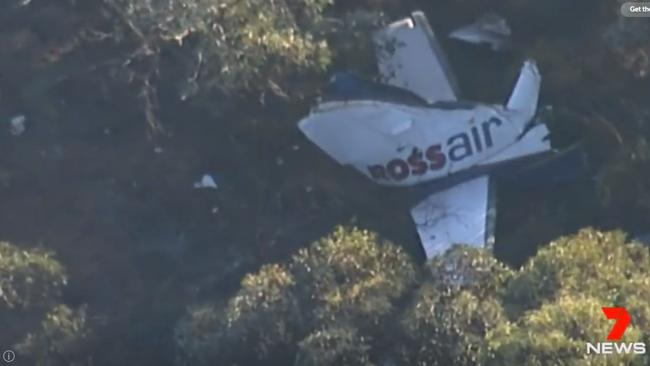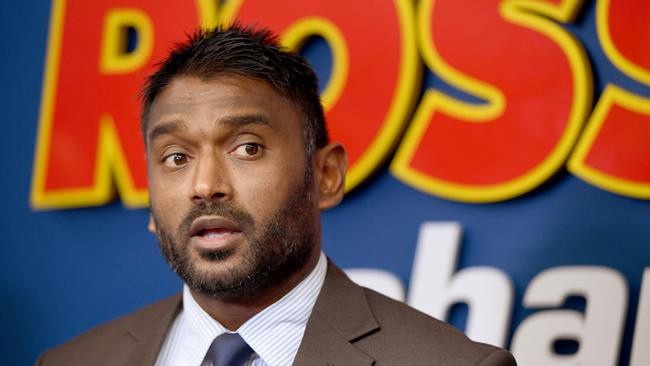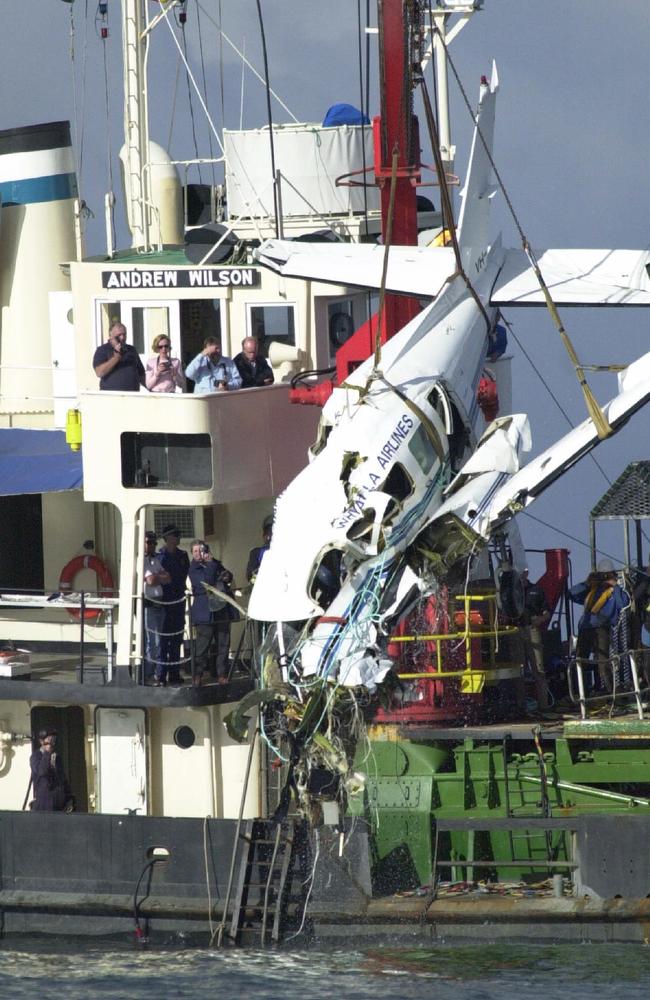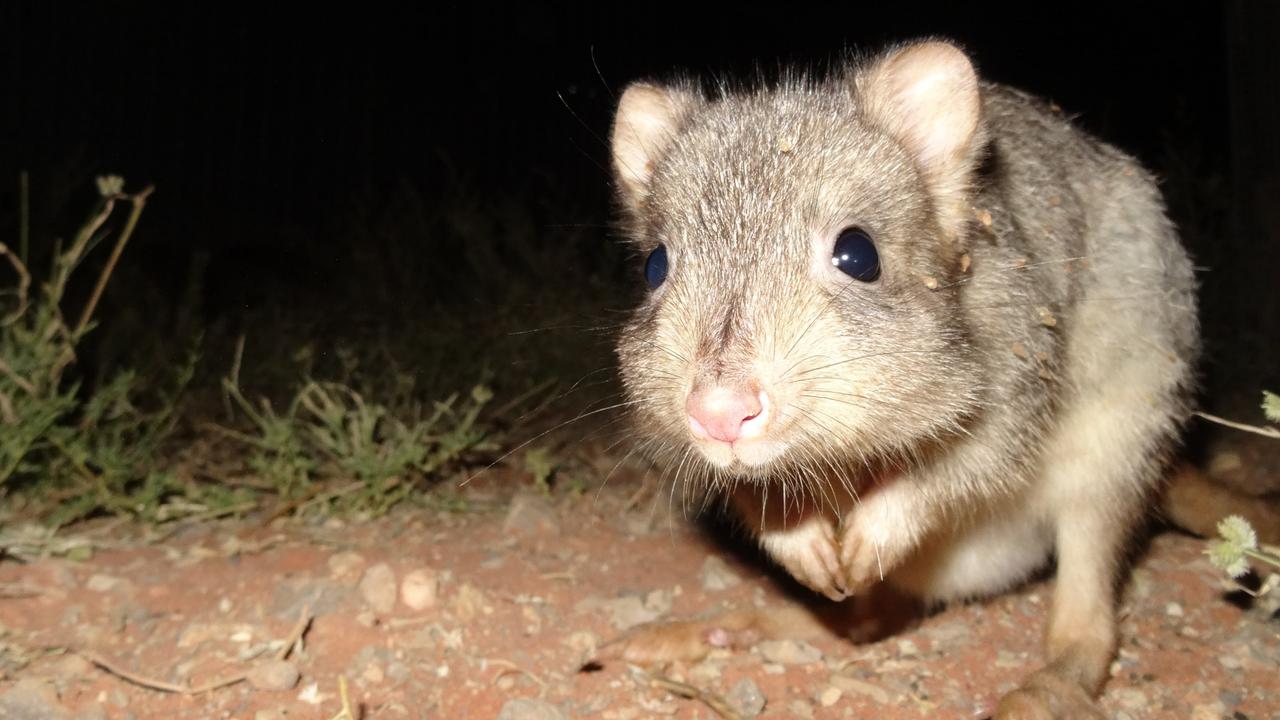Riverland plane crash: Aviation expert Geoffrey Thomas explores probable causes of Renmark tragedy
AN Australian aviation expert feels there are five likely factors that tragically brought down a Rossair flight over the Riverlands on Tuesday.
SA News
Don't miss out on the headlines from SA News. Followed categories will be added to My News.
- Rossair fleet grounded as investigation begins
- How search for plane victims unfolded
- One of three pilots killed in tragedy was about to retire
READ BELOW: Eerie flashback to Whyalla Airlines flight 904
AN Australian aviation expert feels there are five likely factors that tragically brought down a Rossair flight over the Riverlands on Tuesday.
BIRD STRIKE: A probable cause as bird strikes pose a constant safety threat, especially for regional airports. In a 10-year period to 2016 there were 16,000 aviation incidents involving
bird hits — many causing engine problems and cockpit window implosions.
FUEL: Highly unlikely. The Cessa Conquest had been flying throughout the day without any problems so the chances of contaminated fuel being a factor is rare.

PILOT ERROR: Extremely unlikely given the exemplary flying record and experience of the pilots Paul Daw and Martin Scott.
MEDICAL: It remains a possibility. If a chief pilot of a light plane suffers a heart attack and collapses onto the controls, it could spell disaster.
ENGINE FAILURE: Definitely a possibility, but unlikely because of the pilots’ experience they should have been able to keep the plane airborne despite engine loss.

SUMMARY: I have a feeling this could be a one-in-a-billion accident, not unlike the Whyalla Airlines disaster in 2000, which eight people died.
In that instance, the engine suffered a freak catastrophic failure after metal fatigue cracking caused the crankshaft to fail — and had nothing to do with the pilot or the plane’s overall maintenance.
■ Geoffrey Thomas is an Australian aviation expert
Eerie flashback to Whyalla Airlines flight 904
By Craig Cook
SOUTH Australia’s worst air disaster occurred 17 years this week, when a twin-engine Piper Chieftain chartered plane nosedived into Spencer Gulf, 10km southeast Whyalla, just after 7pm on May 31, 2000.
All on board lost their lives, including young Whyalla Airlines pilot, Ben Mackiewicz, initially blamed for the tragedy that rocked the state.
The search and rescue operation for the missing, five men and three women, was one of the largest ever mounted in South Australian waters.
When two bodies and significant debris was recovered the following morning, hope rapidly faded anyone could have survived.
Six days later a further five bodies were recovered by police divers from the main wreckage located on the sea floor but the body of eighth victim was never recovered.
The twisted wreck was hauled out and the first of several investigations began to understand the fate of flight 904.

All investigations concluded both engines had failed but in which order and for what reason was fiercely, and controversially debated.
An Australian Transport Safety Bureau report found that the port engine had a broken crankshaft while the starboard engine had a small hole in a piston, but it questioned the actions of the pilot.
The final ATSB report, blamed no one for the tragedy, but found that Whyalla Airlines, owned by brothers Chris and Kim Brougham, had operated a ‘lean fuel policy’ designed to save money, that weakened the port engine.
Three years later, SA coroner Wayne Chivell slammed the ATSB for making evidence fit its theory that the crash was caused by Mr Mackiewicz overstressing the aircraft’s starboard engine after experiencing difficulties with the port engine.
To the relief of Whyalla community he exonerated the pilot and airline of blame.
Commiserating with the families of the victims of the Renmark tragedy, Whyalla mayor, Lyn Breuer, said flight 904 still deeply affected her community.
“We feel for everyone involved because the Whyalla crash was such a horrendous time,” Ms Breuer, who was in Whyalla the night of the fatal crash, said.
“It is an important part of our history and a constant time that made us realise how important it is for our community to stick together and stay strong.”


